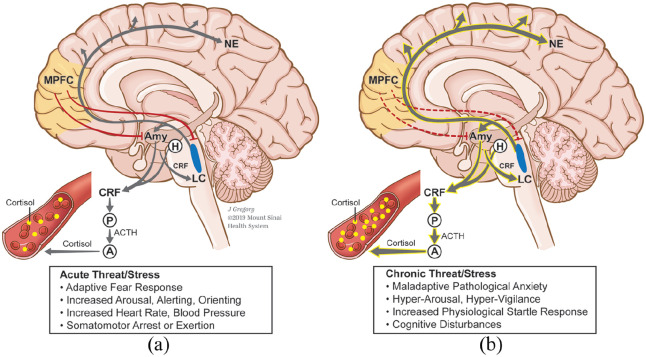Figure 2.
Central actions of the locus coeruleus (LC) in the regulation in threat reactivity.
(a) The adaptive response to acute threat involves a rapid, coordinated response in order to prepare the organism for an acute physiological response and behavioral activation. This involves hypothalamus–pituitary–adrenal (HPA) axis activation, hypothalamic corticotrophin-releasing factor (CRF) release and production of cortisol, which reaches body tissues via peripheral vasculature. Rapid LC activation and norepinephrine (NE) release also occurs, with NE targets throughout the cortex leading to global modulation of arousal and attention. Other NE targets in the amygdala (Amy) and medial prefrontal cortex (MPFC) mediate threat learning and reciprocally regulate the LC (red lines). (b) Chronic threat or stress leads to widespread changes in the central LC-mediated response to subsequent stressors. Chronic stress leads to LC hyper-activity, increased NE in LC, amygdala, hippocampus, MPFC and increased HPA axis activity via reduced HPA regulation. Excessive cortisol and NE relate to maladaptive physiological signs of hyper-arousal and reduced regulation of the LC by the MPFC (dotted red lines), which additionally contribute to reduced regulation of pathological anxiety. Gray lines indicate LC and HPA projections.

